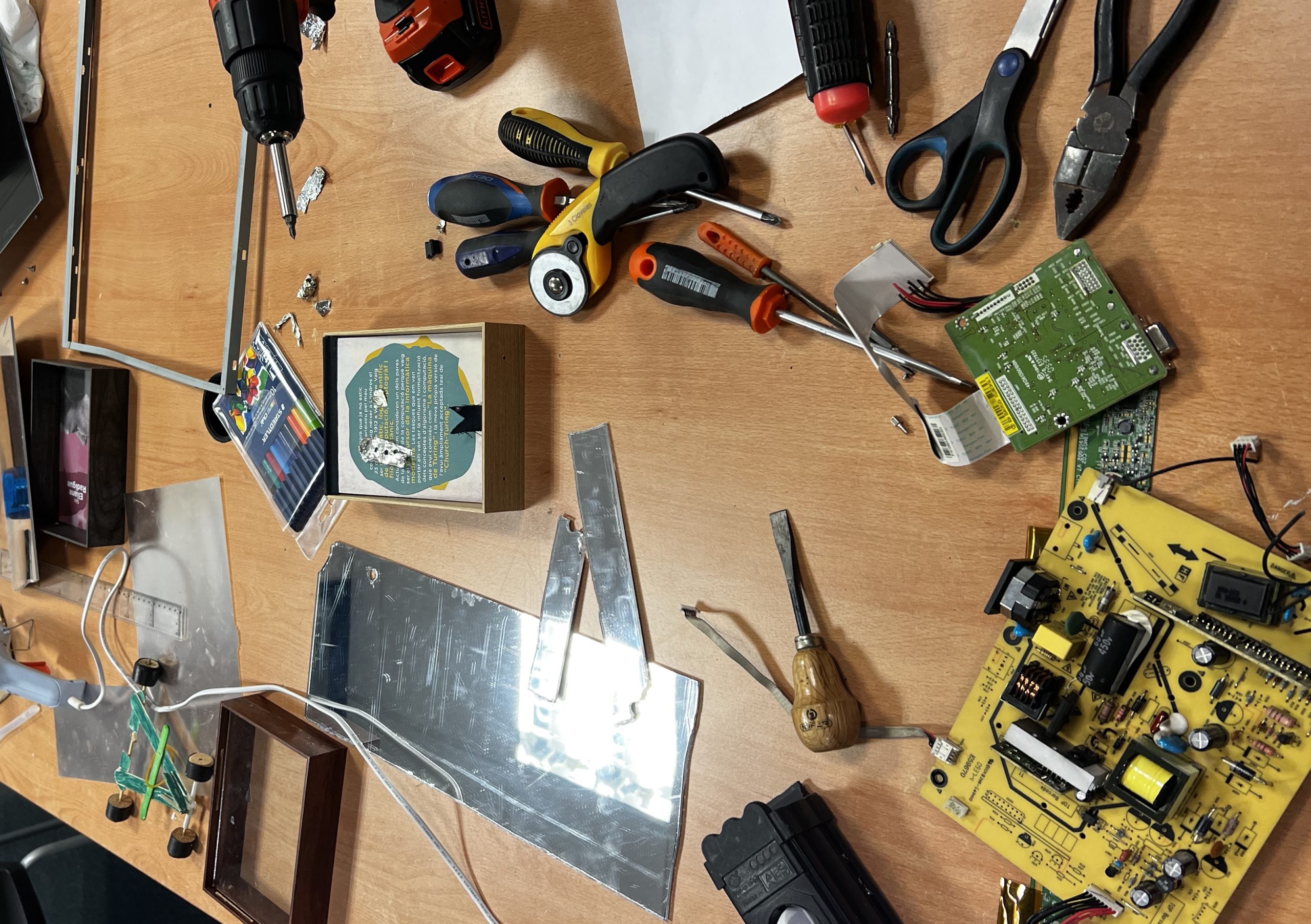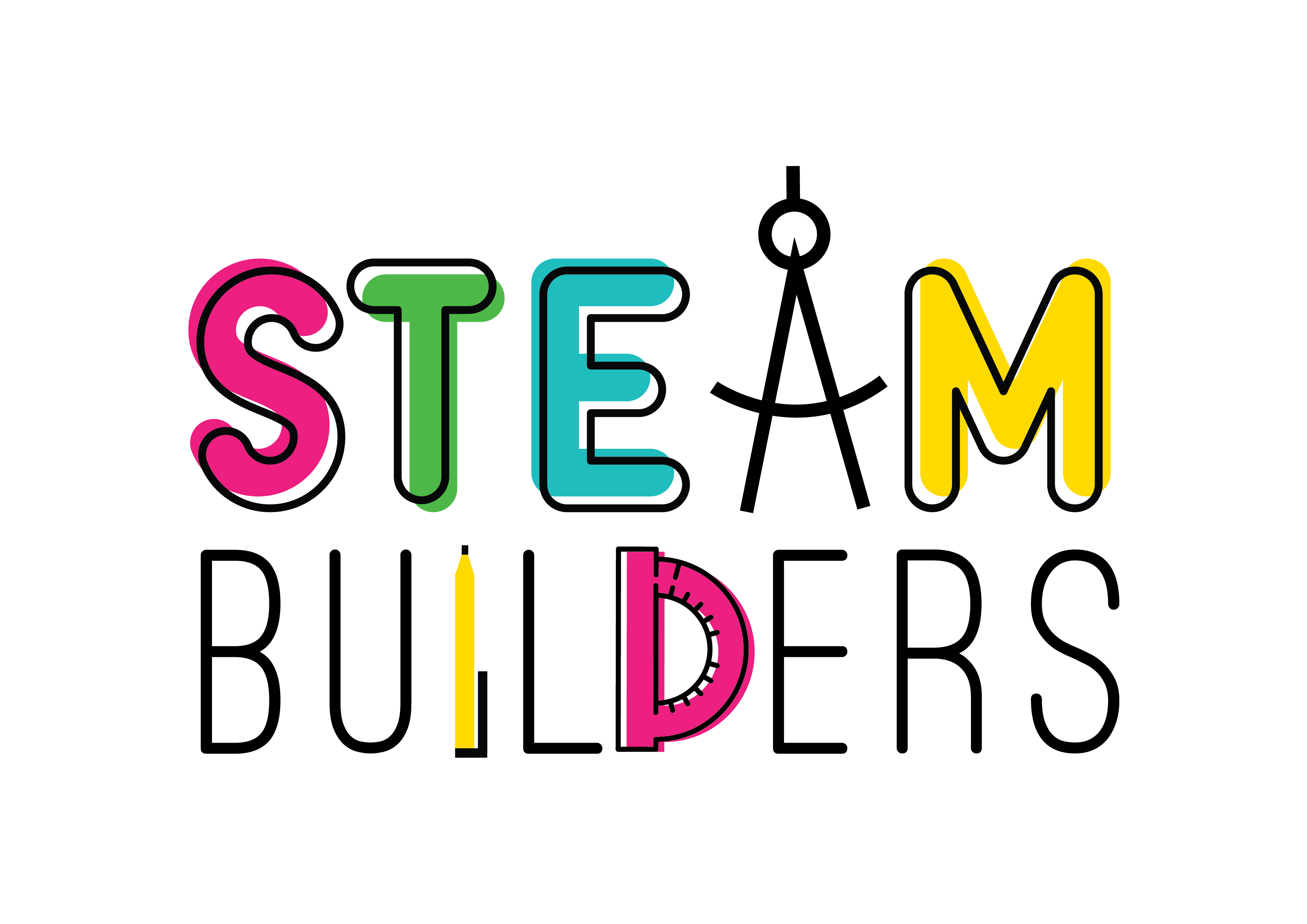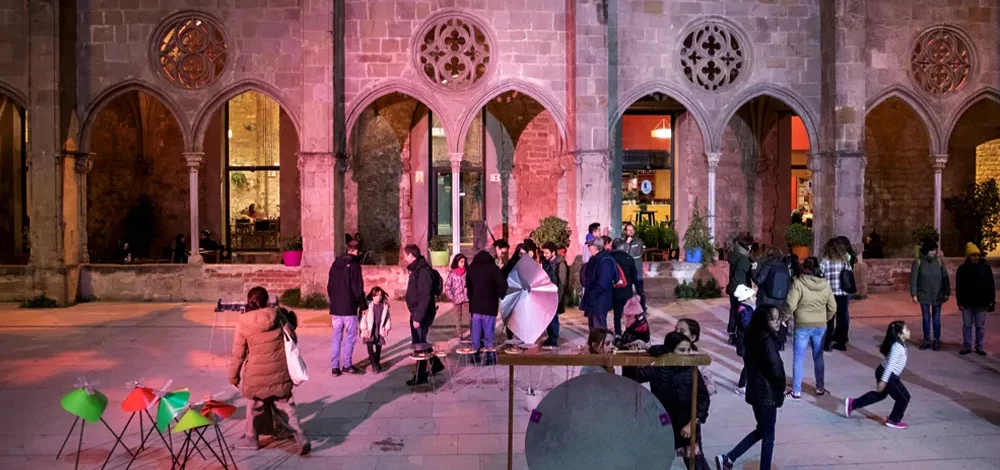
21 mar STEAM Learning Spaces: The Experience of MakerConvent
Creating an open and citizen-focused digital manufacturing space
How do we create a MakerSpace within the school environment? This article aims to give some rough ideas that can be easily adapted to different contexts.
First steps
In recent years we have witnessed the unstoppable awakening of what we call “maker”, or more specifically, of digital manufacturing spaces. Without delving into what level of openness each space has or the resources available to it, we confirm that the common axis of all of them is the promotion of projects dedicated to allowing people to “make” their own technological developments, emphasizing design and creativity.
Our experience creating spaces, hosting activities and advising on the implementation of maker projects in the fields of both formal and non-formal education allows us to focus not only on the design of the space but also on its philosophy and the methodologies to be used.
This journey through these educational projects begins with our participation in two European research and knowledge transfer projects on digital manufacturing (Formalab and Declicin). In this last project, we studied in several European countries why young girls, when they reached the age between 16 and 21, lost interest in studies or training with a strong focus on technology. As a pilot test, we decided to set up a 3D printer kit with a group of girls from the Casc Antic neighborhood of Barcelona. In the course of this process, which was not trivial, a series of needs were defined, such as a suitable workspace where the printer could be assembled, some tools and registration elements, that the space had computers, etc. In the end we realized that what we were doing was laying the foundations for a small community that was the engine of the space that we came to call MakerConvent.
Defining a space that is born in this way is a challenge. In the context of a Civic Centre (this is the case of the MakerConvent) there was already a tradition of activities related to creativity and technology. The programming of these activities, above all, emphasized approaches to basic electronics with children ages 8 to 12, other activities aimed more at adults like technology applied to music, and services for children ranging from 4 years old to adolescents. The challenge does not lie in defining a model, but in throwing an idea for a model on the table so that it grows in the hands of the community that is generated around the space and in the hands of the team that manages the rest of the services. The idea must have a series of transversal axes that must serve as a point of support for activities, projects, collaborations. As a good space dedicated to “the maker” it is not always easy to know if what is done is done correctly. Defining the space also involves a test, a trial-and-error evaluated in a constructive critical manner. What we defined was that we wanted a place where we could play with materials and technology, play with science and creativity, and learn to design by thinking about how to solve problems.
Including a space in the school environment that is so plastic and adaptable as to generate creative thinking is not easy. For this reason, it is necessary to generate environments familiar to the students who, with minimal changes, can establish a new space with different rules, with different tools, and with a different relationship with the adult.
From space to community
The maker movement is initially born from individual experiences that are subsequently shared so that others can replicate what has been done. Obviously, this has generated virtual spaces that function as repositories of the personal skills that the “makers” put into playing and sharing. We refer to all of this when we talk about the concept of DiY (“do it yourself”). The bases of DiY focus on the idea that the individual can create any type of object without the help of any technician or specialist, valuing not only the fact of them acquiring the knowledge to carry out the project, but also the personal technique and imagination needed to solve any problems that may arise. Although the idea of DiY has existed since the industrial revolution as a reaction to specialization in automation, it is with the arrival of the Internet and, more recently, with the introduction of 3D printers that the movement reaches the technological field and permeates other areas such as the creative field. We have never considered that individuality is the methodology of the spaces, we have always believed that the sum of intelligences makes us more intelligent than one, as Levy (2007) says. For this reason, the DiWO (‘learning with others’) or DiT (‘learning together’) methodologies are better suited to our space.
One of the great pending subjects for digital fabrication spaces is the ability to work with the groups linked to the project. Much of the importance of generating interesting projects is thanks to the interaction that occurs between the members who come to the makerspaces. The spaces must not become mere “places with machines” where the final individual fruit is what is enjoyed; the spaces must be environments for mutual development and learning, for interaction, sharing and collaboration, for social and intergenerational return.
Every community is like a living being made up of multiple elements: it learns, develops, evolves and moves. We cannot assume that makerspaces are going to maintain a community effortlessly for the simple fact that the elements offered (machines, collaboration, projects) act as a compacting element. It would be a mistake not to direct activities to the creation of new audiences. Otherwise, the only thing that would be done is to create a self-reinforcing ghetto that in a short time would destroy the space and the community itself. Here we can consider the community as encompassing the school, institute, or the formal environment where the activity takes place.
One element that characterizes these spaces is having a weekly open day; another is not having membership levels. We believe that everyone starts from the same level and puts into play their knowledge and desire to learn and to get involved in the space. At this level, the only thing that is required is that the knowledge about the use of the different machines is developed in the space itself. From here, you can put into play the project idea you want to develop and assess its feasibility. Involvement in the space always leaves room for individual projects, collaboration in common projects and the dedication of equal time to social projects that can be promoted by the institution to which you belong.

Artwork by Teo Vázquez
And the relationship to teaching?
Try to fit your project into the lines of your educational center, bringing new systems of creation, communication and production (such as digital fabrication or rapid prototyping) and tools for learning, dissemination and application in everyday life to all audiences, including boys and girls, and teachers of non-technical subjects. The project, although conceived as a maker philosophy space, should connect design techniques, electronics, mechanics, robotics and more traditional manual work. It must become a transversal piece.
We, in turn, have to offer useful tools and professional advice to carry out the design and development of ideas in a collaborative way. A place to create works with audiovisuals, robotics and a transversal line of learning based on STEAM (Science-Technology-Engineering-Arts-Mathematics). This leads us to empower, on the one hand, a community with a passion for technology, dissemination and learning; and, on the other hand, an inclusive learning space.
Innovation is achieved with a global approach to a set of key skills, with the involvement of users in the process and with the development of an environment that favors creativity and motivation.
The European reference framework establishes eight key competences:
- Communication in one’s native language.
- Communication in foreign languages.
- Mathematical skills and basic skills in science and technology.
- Digital skills.
- Learning to learn.
- Social and civic skills.
- Sense of initiative and entrepreneurial spirit.
- Cultural awareness and expression.
Competence in the fundamental basic skills of language, writing, mathematics and information and communication technology (ICT) is an essential foundation for learning, and the focus on “learning to learn” supports all types of learning activities.
We believe that a series of themes that apply throughout the reference framework should be taken into consideration, which we can consider transversal: critical thinking, creativity, initiative, problem solving, risk assessment, decision making and the constructive management of feelings play an important role with respect to the eight key competencies.
For all these reasons, we move in the design of activities that range from learning code to manipulating complex tools or interpreting instructions, to building with cardboard… never exclusively, always combining techniques progressively.
Photograph by Cristina Claramunt on Trànsit Projectes’ Blog
STEAM and designing the activities
Progressive learning is a process designed to promote a deeper level of learning. The contents proposed from basic precepts support an adaptation to the needs of the person during the learning process, with the intention of helping them achieve their goals.
To carry out a good progressive learning process we need trainers who, beyond having knowledge of the activities they carry out, become facilitators who provide the necessary support or resources for effective learning to take place. These supports may include the following:
- Material resources
- Tasks appropriate to the activity
- Templates and/or guides
- Guidance on the development of the activity and its objectives
- Questions
- Drawings made at the time
- Guiding the peer group to give the necessary support
These supports are used in various educational contexts, either with adults in workshops or with young people in more play-based activities:
- The definition of specific tasks
- Advice, accompaniment, guidance
- Showing in a test or prototype what is being done
The supports are gradually diluted as the participants acquire autonomy. As Seymour Papert (1993) said, extrapolated to a non-school educational environment: “The role of the teacher is to create the conditions for invention instead of providing ready-made knowledge”.
The design of the activities that we carry out in the space seeks interaction between participants and also seeks to encourage group work and the development of moments of collective help and mutual support. Project Based Learning is suitable for this type of approach. That is why we focus on “hands-on” learning, rather than technology, thus offering participants the opportunity to build, do and create. It always begins with a process of creative connection and design to progressively move on to experiments. Art and the humanities go hand in hand with science and technology.
Projects and activities follow a predefined script of actions, but we always leave room for trial and error, creativity and individual and group experimentation. The exchange of ideas, projects, skills and knowledge in the project evaluation and presentation phases is very enriching. Participants own their creations. When a project is completed, the participants should be able to take their result home.
It is necessary for the proper development of the activities that they have an adequate time planning that allows the participants to perceive them as a significant experience.
The STEAM approach offers us a wide range of possibilities in this regard: real environments in which to do simulations, the reuse of materials to solve everyday problems, etc. The relationship between the environment and technology becomes transversal. Technology becomes part of the decoration of the space and becomes invisible as it becomes integrated into everyday life in the realization of projects.

Photograph from Trànsit Projectes’ Blog
Empowerment
We must analyze and evaluate, being constructively critical of our day-to-day work. One of the big reflections, or questions, to ask ourselves is: why do we do it?
We now have many tools, stimuli, connections, resources, a multitude of learning opportunities open to all. Provoking the organic origin of the space is an enabler; in the pedagogical foundations there is a real environment for the development of projects and activities. The access to activities and technology that we propose in these lines is not only directed toward the students, but also toward the teachers, who are the key piece of this puzzle. Our mission is to combat the functional illiteracy that is being generated again and again with the expansion of digital manufacturing tools.
We must be aware that we do this because learning is more complex than we think, but at the same time it is simpler than it is assumed to be. We do it to blur the hard line of age and establish the idea of lifelong learning.
We do it to empower ourselves educationally, culturally, and technologically.
References
Alvarez, A. (1997). Towards a cultural curriculum: The validity of Vygotsky in education Madrid: Childhood and Learning Foundation.
EUR-Lex Access to European Union law. (nd). Retrieved September 28, 2016, from http://eur-lex.europa.eu/legal-content/EN/TXT/?uri=URISERV:c11090
Levy, P. (2007). Cyberculture: Report to the Council of Europe. Ruby, Barcelona: Anthropos.
MakerConvent. (2015, February 10). Great Makers. Retrieved September 28, 2016, from https://www.youtube.com/watch?v=5S9t8J3yiH8
Papert, S. (1993). The children’s machine: Rethinking school in the age of the computer. New York: BasicBooks.
The third teacher: 79 ways you can use design to transform teaching & learning. (2010). New York: Abrams.
This article was written by: Òscar Martínez Ciuró of Trànsit Projectes.

